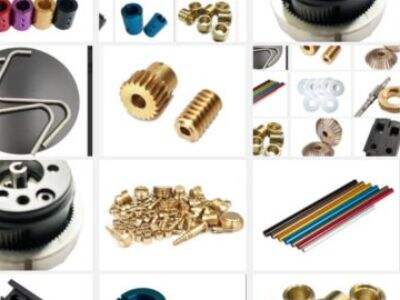When we make the gears, accuracy is of paramount importance. It reduces errors that may occur during the manufacturing process. And this is what high accuracy means for gears: they fit better and operate smoothly. Tolerances are also a significant factor in gear design. Tolerances indicate how accurate the gears must be to function properly. If the tolerances are too loose, the gear may not be operational, which will cause a dilemma. Conversely, if the tolerances are too tight, it can place excessive pressure on the gears, causing them to wear out more quickly than anticipated.
Important Considerations for Gear Tolerances and Precision
There are a number of considerations designers have to bear in mind when they design gears. Now, they have to consider what materials will be used to create the gears. And various materials could determine how strong and durable the gear will be. Next, designers should consider what type of gear they will need to get the job done. Types of GearsGears come in a variety of types, and each serves a unique purpose. Last but not least, is the real life application that the gear will undergo. For example, gears used in heavy machinery, such as construction vehicles, require a higher tolerance and sophistication when manufactured. These gears have to be strong enough to bear the weight without collapsing or cracking. A light machine doesn't necessarily call for an accurately machined gear.
Design Parameters In Gear Design: The Way Ahead
An engineer considers many parameters, which affect gear performance. To mention a few of them: pitch, pressure angle, module, number of teeth, and addendum.
The pitch is the distance between the teeth in the gear. If the gears measure out to a proper pitch, they mesh properly, and work in concert.
Pressure angle is the angle between the center axis of the gear and the gear teeth. It affects the way the gears transfer power and mesh with one another.
It means the size of the gear and is important because this is classically the way you define how the gear will mesh with others in the mechanical design.
Meaning the number of teeth on the gear. Additional teeth will smooth the running, but also change the way the ratio is figured.
Addendum: The distance from the pitch circle to the outer edge of the gear. This measurement can aid in designing gears that mesh smoothly with other parts.
This Is How Accuracy Affects Gear Performance
Gear design requires accuracy, since the gears are meant to work effectively and safely. Highly accurate geared joints are normally long-lasting and have a longer life. This means that equipment that uses these gears will require less maintenance as time goes on. When the gears work, it means they are less likely to break and save time and money in repairs. In short, good machine is a well-designed machine.
Design for Tolerances and its Importance
This tolerance is important to gear design as, if tolerances do not help, gears cannot work properly. Designers when designing the gears must be able to choose how much tolerance is necessary and sufficient for that purpose of a certain gear. The gear will neither assemble nor work properly if its tolerance is tight, and there will be bad performance. On the other hand, when the tolerance is too close, the gear can be worn out faster due to being forced into each other. The trick lies in discovering a suitable level of tolerance appropriate to the job required. It must be a sort of balance necessary to ensure the gear functions right and is rather durable.
At large, in gear design it relies heavily upon accuracy or tolerance. At Dakunlun, we still know that gears need to be tightly accurate, and we can always design the gears for your special needs. Material selection, type of gear and application for the gear are the most important considerations in gear design. The numbers of teeth and addendum are just some examples of the factors involved with gear design that must be understood to help ensure success. Finally, designers should determine the adequate amount of tolerance so that gears will mesh effectively. With respect to these seriously important considerations, gears can thus be designed and manufactured to highest standards of precision and tolerances, creating parts fitting together perfectly-and working correctly, safely, for years, even decades.

 EN
EN
 BG
BG
 HR
HR
 CS
CS
 DA
DA
 NL
NL
 FI
FI
 FR
FR
 DE
DE
 EL
EL
 IT
IT
 JA
JA
 KO
KO
 NĒ
NĒ
 PL
PL
 PT
PT
 RO
RO
 RU
RU
 ES
ES
 SV
SV
 TL
TL
 LV
LV
 SR
SR
 SK
SK
 SL
SL
 UK
UK
 VI
VI
 ET
ET
 HU
HU
 TR
TR
 FA
FA
 GA
GA
 BE
BE
 EO
EO
 MI
MI




